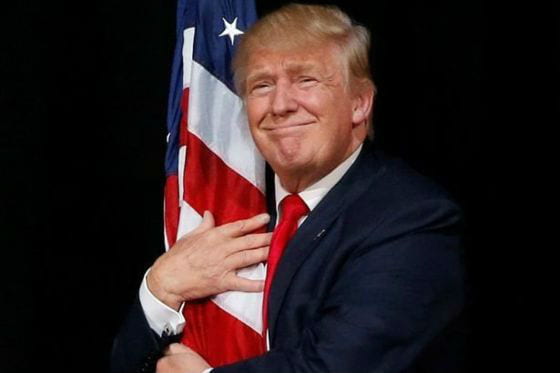BY KATHLEEN MURPHY — STAFF WRITER
Throughout his terms as president, many called Barack Obama a “social media president” with his young, tech-savvy campaign and White House staff. So in the social media era, what does this make Donald Trump? The obvious answer is the Twitter president. Throughout the election, he was known for his tweets–for better or for worse–and he often dominated election conversation on the site, taking down other opponents in less than 140 characters. But if you scan through the various social media sites he uses, this nickname proves itself misplaced.
When Obama transitioned his social media power from campaign to governing mode, he signed the White House, the presidency and sometimes even himself up for almost every popular site out there. This included Facebook, Twitter, Instagram–even Pinterest and Tumblr.But Donald Trump has decided to scale down his presence across this spectrum, perhaps due to his preference for TV as a communication medium, and only maintained the presidency’s accounts on the first four sites. Interestingly while the Obama administration archived its Tumblr account right before he departed, the official White House Pinterest account remains stuck in pre-Inauguration times. The new administration’s approach does not seem to say Twitter President so much as it does scaled-down social media president – in line with the Obama administration.
The most significant step the Trump social media team has taken is in the way the president uses his personal account as a public figure, versus how he uses his professional account as a president. While having two accounts seems quintessentially Trump – with one account not being enough to contain all he has to say about himself – it is actually not unusual for most well-known politicians. Both Obama and former Vice President Joe Biden had two different accounts. Vice President Mike Pence even has three accounts–a personal one as a public figure, an archived one from his time as governor, and now the @vp account.
The real difference that sets Trump apart lies in how he uses his two accounts. Most political figures advocate for their policies or positions on their accounts, with quick quips or strong demands that make their posts somewhere in between a sound bite and an advertisement. For example, most of Obama’s last posts on both his personal and his now archived presidential accounts included videos and links promoting the Affordable Care Act and its associated heath insurance campaign.
Trump, on the other hand, prefers to use words to express how he feels on a subject of his choice. Many have noted that these posts, especially those on Twitter, are linked to cable news broadcasts or criticisms. While sometimes Trump’s braggadocios posts are littered with a liberal use of exclamation points that would have made Ernest Hemmingway cringe, he tends to limit his very unique voice to his personal accounts.
To see this in action, the official Facebook account of President Trump has a smattering of videos and live streams captioned with various turns on the phrase “join me as I…” His official presidential Twitter, on the other hand, is a bit more colorful, with some quotes from his joint address to Congress employed as a teaser before the speech itself. However, his gracious invitations do not always extend to his official personal account. Often other louder tweets crowd them out of the feed. In the rare instances where his official presidential accounts read like his voice rather than a social media team, the posts often have links to posts on his personal pages.
These personal accounts across multiple platforms represent the raw form of Trump, where his unique and very distinguishable voice shouts into the great Internet abyss. This voice sounds a little like:
“Russia talk is FAKE NEWS put out by the Dems, and played up by the media, in order to mask the big election defeat and the illegal leaks!”
“Find the leakers within the FBI itself. Classified information is being given to media that could have a devastating effect on U.S. FIND NOW” (Tweet, @realDonaldTrump).
This style of communication is well suited to social media platforms, but especially to Twitter. His short fragments, incomplete sentences, love of capital letters, disregard for grammar conventions–like many Twitter users–and provocative word choice set him apart among politicians online. They find a special home on Twitter where long-winded sentences on policy must be cut off or split up, and insistent aggravation draws the instant attention of most other tweeters.
However, this does not make Trump just the “Twitter president.” The short emotional assertions of his style work equally well on other social media platforms, especially for mobile users who prefer not to scroll or read extensive pieces on small screens. Trump may not be a full-fledged Twitter president or a social media president in the vein of Obama. His social media presidency is one of his creation – on fewer platforms, compensated for with its own loudly special flair.

